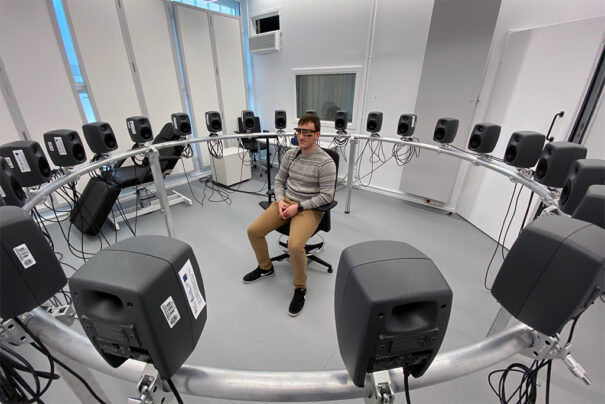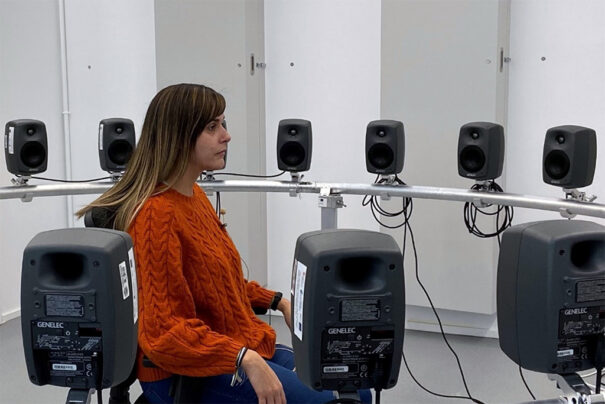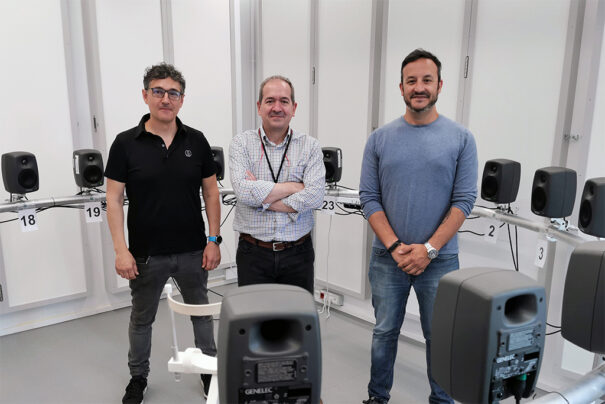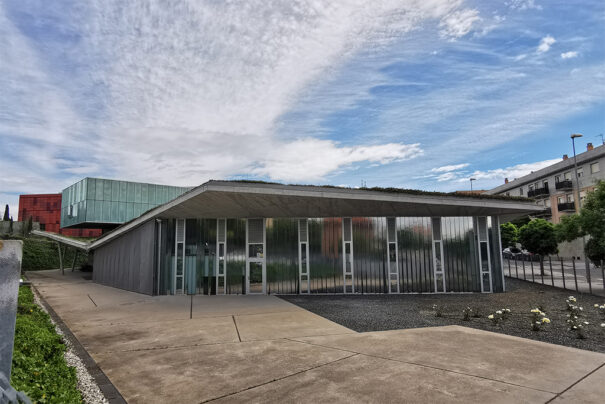Uneva trusts Genelec sound for its research center
In it Institute of Neurosciences of Castilla y León se ha creado una sala insonorizada con reverberación variable que permite simular la escucha gracias a un anillo de tres metros de diámetro que incorpora 24 monitors Genelec 8020, supplied by Audio-Technica Iberia.
La Unidad de Evaluación Acústico-Auditiva (Uneva) de la Universidad de Salamanca (USAL) alberga una investigación puntera en tecnología de prótesis auditivas e implantes. Ubicada en el Institute of Neurosciences of Castilla y León, es considerada una infraestructura pionera para la tecnología auditiva en la región. En el corazón de la instalación se encuentra una sala insonorizada con reverberación variable que permite simular la escucha en varios entornos sonoros gracias a sus monitores de estudio Genelec 8020.
La unidad se puede utilizar para investigaciones basadas en experimentos de percepción, tanto con personas sanas como aquejadas de patologías, así como para investigaciones en el campo de la neurociencia teórica y el desarrollo de modelos computacionales.
También ayuda con la investigación de modelos para mejorar los implantes auditivos, audífonos y otros dispositivos de ayuda a la audición, así como métodos de diagnóstico para personas con problemas. Besides, la unidad se utiliza para demostrar si el nuevo procesado de sonido para las ayudas a la audición y los nuevos dispositivos en sí mismos son beneficiosos para los usuarios.
Los modelos computacionales desarrollados en este laboratorio sirven para simular cómo funciona el sistema auditivo sano y cómo se alteraría la representación del sonido en el cerebro de un oyente cuando hay una enfermedad o lesión.
“De esta forma, podemos simular cómo se codifican los sonidos en el oído sano y cómo dejan de codificarse cuando existe un daño”, the teacher explains Enrique López Poveda, director de Uneva. “Y como tenemos los modelos que simulan el comportamiento del oído sano, podemos usarlos como base para construir audífonos o implantes auditivos. That is to say, tienes un algoritmo que reproduce el comportamiento del oído sano, y cuando el oído está alterado, usamos ese algoritmo para reproducir lo que está fallando y reconstruirlo”.
La sala de acústica variable es el espacio central para llevar a cabo esta investigación. Se ha observado que las personas con problemas de audición y que usan audífonos o implantes cocleares, tienen pocos problemas para entender el habla cuando no hay reverberación, pero en un espacio reverberante tienen grandes dificultades. El otro factor significativo es cuán ruidoso es el ambiente. Therefore, se ha creado la sala para probar estas observaciones y ver cómo se puede utilizar la tecnología para superar estos desafíos.
La sala en sí ha sido blindada eléctricamente, insonorizada y equipada con paneles que se pueden abrir o cerrar para ajustar la reverberación y la absorción, lo que permite realizar pruebas en entornos realistas.
En el corazón de este espacio se ha colocado un anillo de tres metros de diámetro que incorpora veinticuatro monitores 8020, suministrados por Audio-Technica Iberia, el distribuidor local de Genelec, que permite a los investigadores crear y cambiar los niveles de ruido ambiental en el espacio.
“Una prueba típica es reproducir una frase, palabra o conversación en presencia de otras frases, palabras o ruido procedente de otras fuentes”, explica el profesor López Poveda. “Por ejemplo, se reproduce una frase a través de un monitor y el oyente tendría que repetirla mientras otros monitores reproducen ruido ambiental y otras fuentes de voz. Si el oyente repite correctamente lo que ha escuchado, subimos el nivel de ruido. Cuanto más ruido y más frases se usan, más difícil es entender correctamente la frase principal”.
Fue su fiabilidad, su sonido neutro y su capacidad de adaptar su respuesta de frecuencia al entorno de escucha lo que llevó a la selección del modelo 8020 para este proyecto. Los monitores son un elemento fundamental del trabajo que se lleva a cabo en Uneva, ya que la investigación requiere un nivel excepcional de precisión y consistencia.
He 8020 se ha convertido en una referencia para la monitorización de campo cercano de 2 vías compacta, y su pequeño tamaño y su recinto de diseño curvado lo hacen perfecto para un comportamiento ‘transparente’, produciendo menos reflejos y difracción incluso cuando se han instalado muchos monitores muy cercanos entre sí.
La primera etapa del proyecto ha sido la instalación del anillo de 24 monitors, pero hay planes para seguir desarrollando la unidad.
“Hemos creado un anillo de altavoces, pero podríamos añadir más”, afirma el profesor López Poveda. “Podríamos construir una esfera, ya que el diseño del anillo también permite girarlo y colgarlo del techo, para lo cual hemos provisto ganchos en diferentes posiciones; es muy versátil”.
Did you like this article?
Subscribe to our NEWSLETTER and you won't miss anything.






